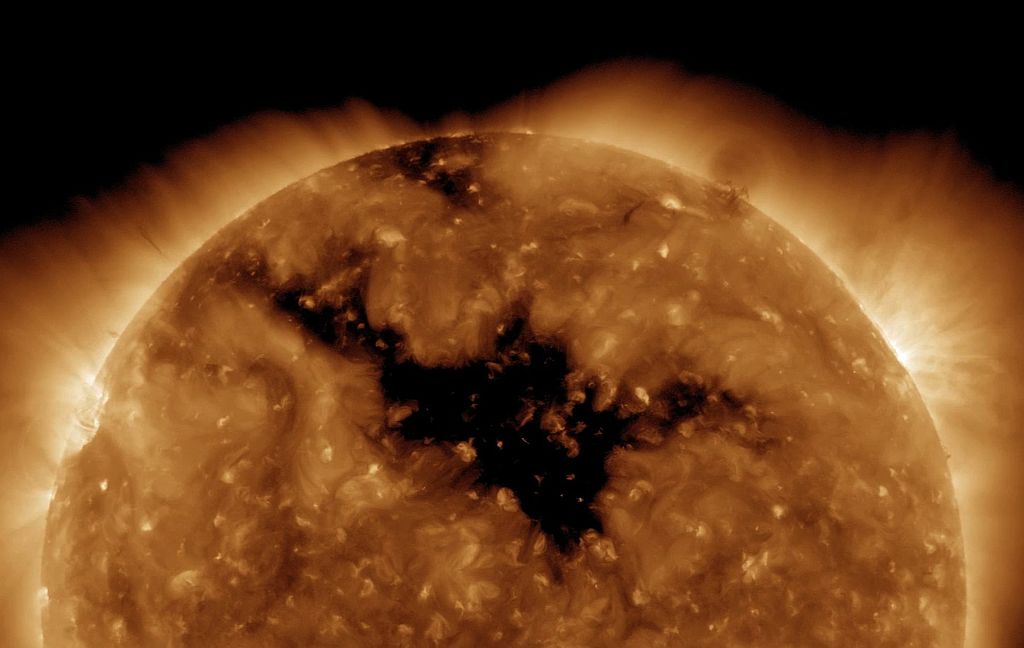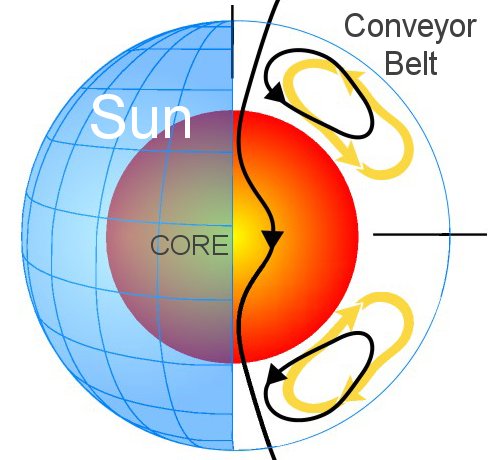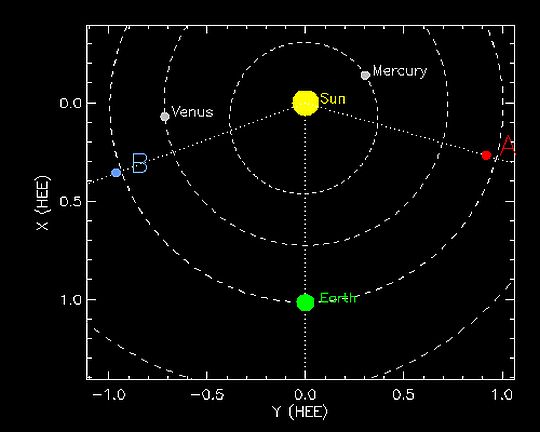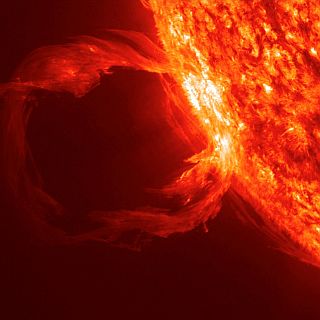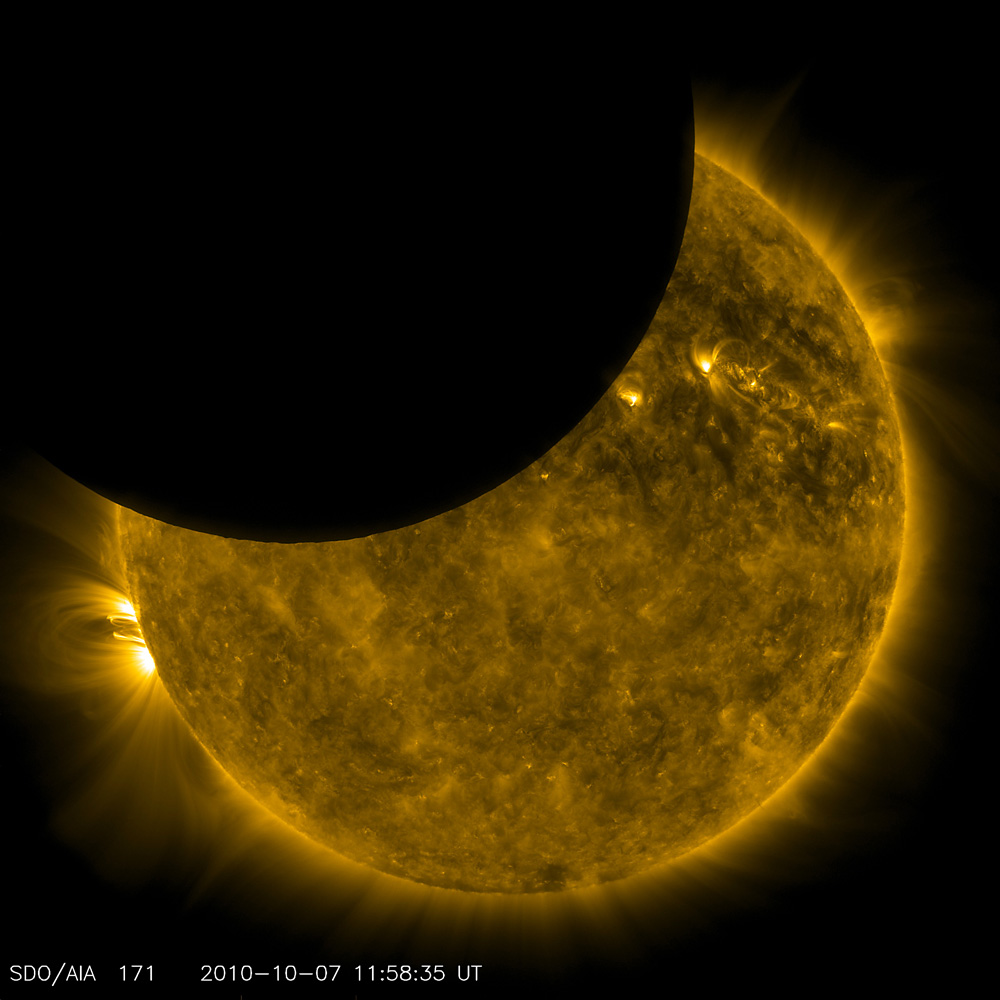 An Interesting eclipse occurred earlier this month when the moon passed between the Solar Dynamics Observatory and the Sun. This is the first recorded lunar/solar eclipse taken by SDO although earth/solar eclipses happen often. SDO is like the Hubble Space Telescope but is totally devoted to solar activity.
An Interesting eclipse occurred earlier this month when the moon passed between the Solar Dynamics Observatory and the Sun. This is the first recorded lunar/solar eclipse taken by SDO although earth/solar eclipses happen often. SDO is like the Hubble Space Telescope but is totally devoted to solar activity.
The image at the right shows the partially-eclipsed solar disk (courtesy NASA – click to enlarge). I also uploaded a close-up image in which the mountains along the lunar limb can be discerned against the solar disc. This demonstrates the excellent resolution of the instruments aboard SDO.
The following is taken from the SDO website where you can download and watch a Quicktime video of the eclipse.
This was a first for SDO and it was visually engaging too. On October 7, 2010, SDO observed its first lunar transit when the new Moon passed directly between the spacecraft (in its geosynchronous orbit) and the Sun. With SDO watching the Sun in a wavelength of extreme ultraviolet light, the dark Moon created a partial eclipse of the Sun.
These images, while unusual and cool to see, have practical value to the SDO science team. Karel Schrijver of Lockheed-Martin’s Solar and Astrophysics Lab explains: “The very sharp edge of the lunar limb allows us to measure the in-orbit characteristics of the telescope e.g., light diffraction on optics and filter support grids. Once these are characterized, we can use that information to correct our data for instrumental effects and sharpen up the images to even more detail.”

